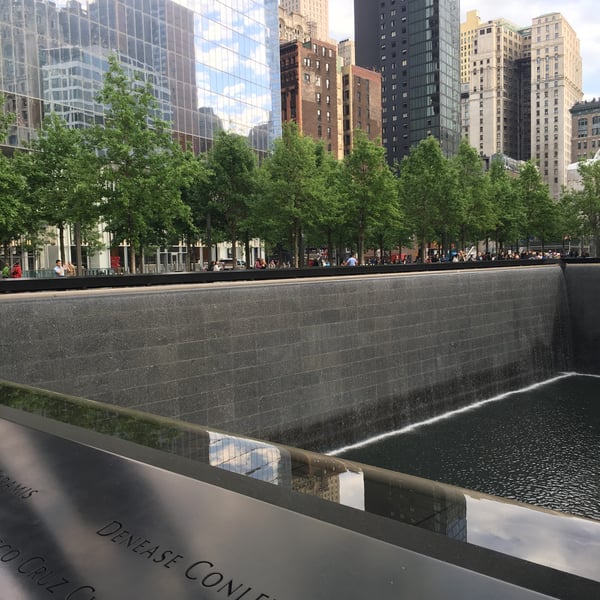Peace, Justice, and Strong Institutions by Design: Peacebuilding Architecture
Micène Fontaine, May 11, 2020
On a trip to New York, I visited the 9/11 memorial at One World Trade Center. I thought a lot about the relationship between war, peace, and architecture. After all, 9/11 and mass shootings are the only first-hand experiences I have had with war. In Normandy, France, where I grew up, the scars left by the first two world wars are omnipresent and most notable in the urban landscape.

In wars, people pay the ultimate price, of course, but architecture - especially culturally-relevant sites - are often taken hostage and obliterated. Architecture is full of powerful symbols, which is why ground zero in New York was rebuilt and why ISIL demolished several of Palmyra's World Heritage Sites. Sadly, the list of examples is long, and many of the cases are recent. If architecture is so intertwined with war efforts, it begs the question, what role can architecture play in peacebuilding? Is it purely symbolic, or is there more? What role do design professionals play in designing for peace, including in our communities here in the U.S.?
When was the last time you walked into your local police station or gave any thought to the way it looks? What message does it send to the community "come on in" or "stay away"? On one of my weekly jogs, I ran past my local police station as I have many times before. It's a lovely old building. Yellow with white trim at the edge of a park. Were it not for the police cars and the sign; you would never know. It could be an art center, a local coffee shop. It could be a place where the community meets. Yet, I have never set foot in that building. What about you?
The thought lingered for the rest of my run. It brought me back to the symbolic power of architecture and the role it plays in peacebuilding, which I had pondered on my trip to New York. It also reminded me of Chicago architect Jeanne Gang and her Polis (borrowing from the Greek word) Station concept in which the Police station is reimagined as a community-centered mixed-used complex that draws in the community.
These are not rhetorical questions. They are the type of issues we ponder in our "Change by Design" series aimed at what design professionals can do to address issues such as: zero hunger by design, affordable and clear energy by design, and the other UN Sustainable Development Goals. The series highlights how the built environment interacts with these issues and encourage you - the practitioners - to be the catalysts of change, to become both change-makers and change-ambassadors. Our intent is about asking better questions and having better conversations with all stakeholders in every community. It does feel overwhelming and - it is - but we owe it to future generations to at least try.
In many cases, change starts with trust. And trust is precisely what former UN Secretary-General Ban Ki-moon suggests is required to "carry people forward into a peaceful future." The built environment can weave a community together or tear it apart.
The choice is yours and lies in your design decisions.
As design professionals, you are also change-ambassadors and peace-builders who help instill trust by design in your communities and across the globe.




